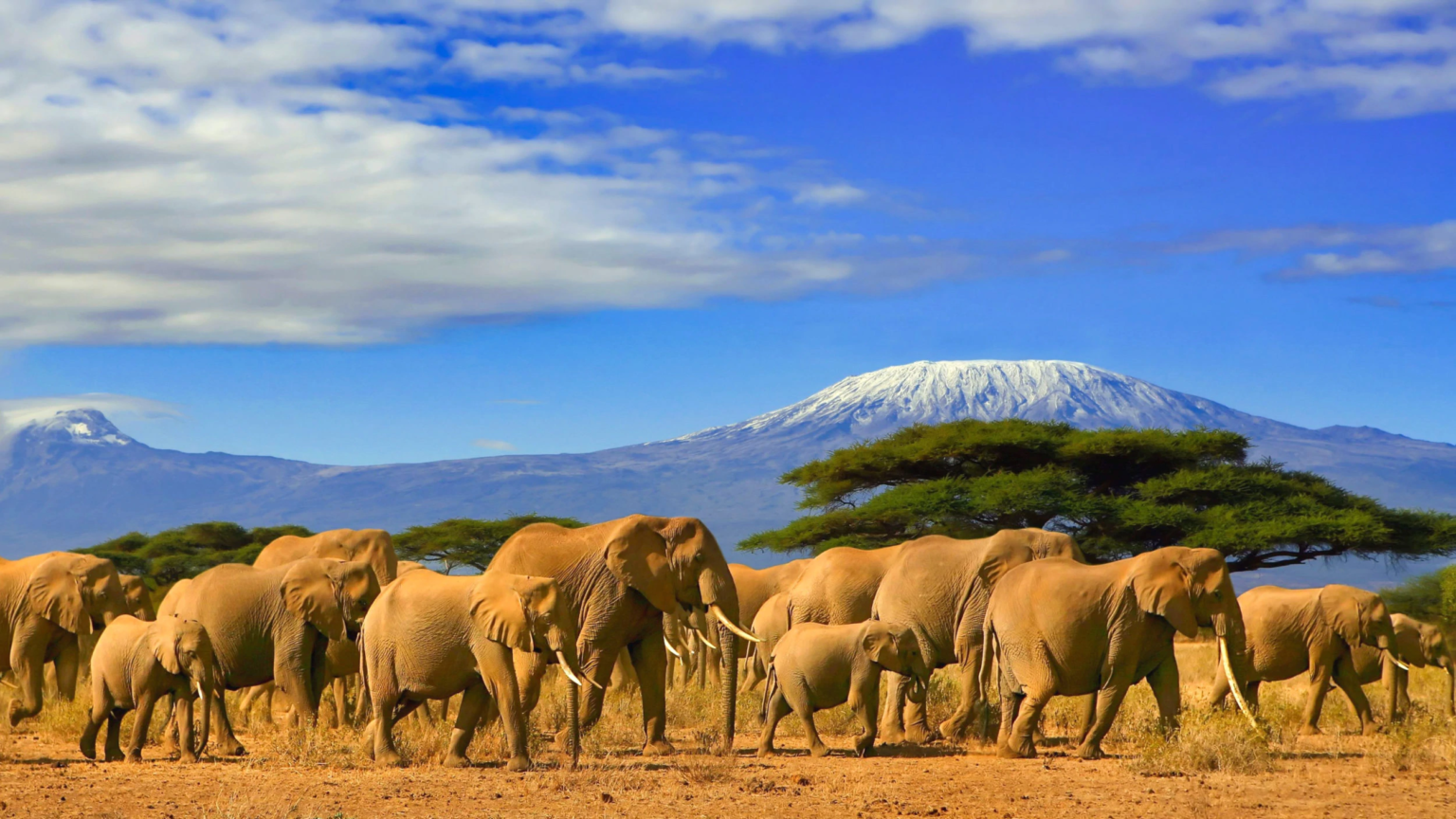Africa is home to beautiful and large Safaris, so many people visit to experience its safaris and view its vast plains and deserts. Safaris in Africa allow you to see wildlife in its native habitat. The best safaris in Africa promise a once-in-a-lifetime experience, especially for those hoping to see the “Big Five,” which include the leopard, lion, rhinoceros, African buffalo, and elephant.
African safaris are one of the most picked vacation places by people worldwide, but how do you know where to go for the finest safari in Africa with so many incredible wildlife sites to choose from?
Your decision will be based on what you want, including the species you want to see in the wild, the style of safari vacation you like (walking, game drives, camping, or luxury), and who you’re travelling with, especially if you want to go on a safari with kids or need an accessible safari vacation.
It can be overwhelming to pick an African safari that suits you best because many options are available. Well, one less thing for you to do as you plan your trip because we have put together a list of the top African safaris to assist you in making the right decision. This list was compiled based on reviews, personal experiences, stunning views and comfortability.
1. Kruger National Park, South Africa

Kruger National park is one of the continent’s largest game reserves. It is also recognized as the best safari in South Africa and gives stunning views of the country’s mountains, plains, and tropical forests.
The Kruger National Park, located in northeast South Africa close to Mozambique, is home to 507 birds, 336 trees, 147 animals, 114 reptiles, 49 fish, and 34 amphibians, among other species. The Big Five can be seen in passing, but you should also keep an eye out for the fish eagle, wild dog, and ground hornbill.
This safari is excellent for a self-guided tour and offers places and hotels to spend the night if you want to be autonomous and explore independently. Any traveller can enjoy a trip to the Kruger National Park because there are options for any group, including the traditional safari tour, family holiday safari, romance safari, fully guided safari tour, etc.
Best time to visit: January, March, July and September.
Entrance fee to Kruger National Park
- International visitors Adult:$26.50 USD
- Child:$13.20 USD
South African residents and citizens
- Adult: R110 ($6 USD)
- Children: R55 ($3 USD)
SADC Nationals (with passport): Adults: R220 ($12 USD)
- Children: R110 ($6 USD)
2. Serengeti National Park, Tanzania

The Serengeti National Park, located in Tanzania, covers an area of 14,750 square kilometres and was established in 1951. The name “Serengeti” comes from the Maasai language, meaning “endless plains.” The park is characterized by its vast plains, savannah, and grasslands, which make it an ideal habitat for various wildlife species. The park is home to over 70 species of large mammals and over 500 bird species.
Apart from the annual wildebeest migration, the Serengeti is also renowned for its large populations of elephants, giraffes, zebras, buffalos, and antelopes. The park is also home to predators such as lions, leopards, cheetahs, hyenas, and wild dogs. The park’s diversity of wildlife attracts visitors from all over the world, making it one of Africa’s most popular tourist destinations.
The park is also home to several cultural tribes, including the Maasai people, who are known for their distinctive dress, customs, and lifestyle. Visitors can interact with the Maasai people and learn about their culture and traditions.
Apart from wildlife viewing, visitors to the Serengeti can also participate in hot air balloon safaris, guided walks, and cultural tours. The park also has several lodges and campsites for visitors, providing a unique and authentic safari experience.
However, the Serengeti is not immune to threats such as poaching, habitat loss, and human-wildlife conflicts. Conservation efforts by the Tanzanian government, NGOs, and other stakeholders are ongoing to protect the park and its wildlife.
Best time to visit: January, February, March , April, May, June, July, October and December.
Serengeti National Park Fees
- Adults (over 16 years): $60 USD
- Children (5-16 years): $30 USD
- Children below the age of 5: Free
3. Etosha National Park

The Etosha national park is one of Africa’s best parks for travellers. In 1907, it was declared a national park. Its name is a homage to the Etosha Pan, a portion of a dried-up lake described as “the region where no vegetation grows” in Ovambo. You can see it from space since it is so big!
Setting out by a spring-fed waterhole and watching for animals to arrive is one of the best safari activities in this national park. The dolomite hills and the dry savannas form a stunning view in the Etosha National Park.
The big five and the preservation of both the native black rhinoceros and the reintroduced white rhinos are further reasons why this park is well-known. At Etosha National Park, cheetahs, caracals, jackals, and hyenas can also be seen.
Best time to visit: February and December.
Entry fee for Etosha National Park
- Adults (Foreign): NAD80 per day ($4.44 USD)
- SADC Adult rate: NAD 60 per day ($3.33 USD)
- Namibia citizen
- Adult: NAD 30 per day ($1.66 USD).
- All Children under 16 years: free
Daily Vehicle Fees At The Park
- Cars with ten seats or less: NAD 10 ($0.55 USD) per vehicle per day.
- Cars with 11-25 seats: NAD 40 ($2.22 USD) per vehicle per day.
- Vehicles with 26-50 seats: NAD 300 ($16.64 USD) per vehicle per day.
4. Bwindi Impenetrable National Park, Uganda

Bwindi Impenetrable National Park in Uganda is another beautiful safari location in Africa. Bwindi Impenetrable National Park is situated on the brink of the Albertine Rift in a thick rainforest in southwest Uganda. Chimpanzees, monkeys, and half of the endangered mountain gorilla population call it home. Only 800 mountain gorillas live in Uganda, Rwanda, and the Democratic Republic of the Congo, but I think Bwindi Impenetrable National Park is the finest area to get close to them.
If you want to get up close and personal with these fascinating animals, you may even get permission and go gorilla trekking. Beautiful birds, butterflies, and flower species are abundant throughout the rugged pathways.
Best time to visit: January, February, June, July, August and December.
Entrance fee:
- Foreign non residents:$40 USD
- Foreign residents: $30 USD
- East African citizens: UGX 20,000 ($5.43 USD)
- Foreign non-resident children: $20 USD
- Foreign residents – $10 USD
- East Africa Citizens- UGX 5000 ($1.36 USD)
- Pupils/ students in group from East Africa: UGX3000 ($0.82 USD)
- Tertiary students pay UGX 5000 ($1.36 USD) as park entrance
5. Okavango Delta, Botswana

One of Africa’s most stunning and wildlife-rich regions is this inland delta. It is a floodplain in northern Botswana that receives water from neighbouring Angola from May to October. During this time, tourists can take a mokoro, a traditional canoe, for a unique experience of the reed-lined canals. The delta contains several reserves, and because tourism is regulated there, it feels wild and remote. It is also the most expensive location for safaris. Thoughts of lions hunting buffalo, wild dogs running in the bush, hippos cooling off in the water, and elephants browsing acacias come to mind while considering the outstanding wildlife viewing. And it’s a superb location for bird watching.
Best time to visit: March, April, May and October.
Entrance fee:
- Adult with food: $150 USD per day
- Adult without food: $10-$15 USD
6. Masai Mara National Reserve, Kenya
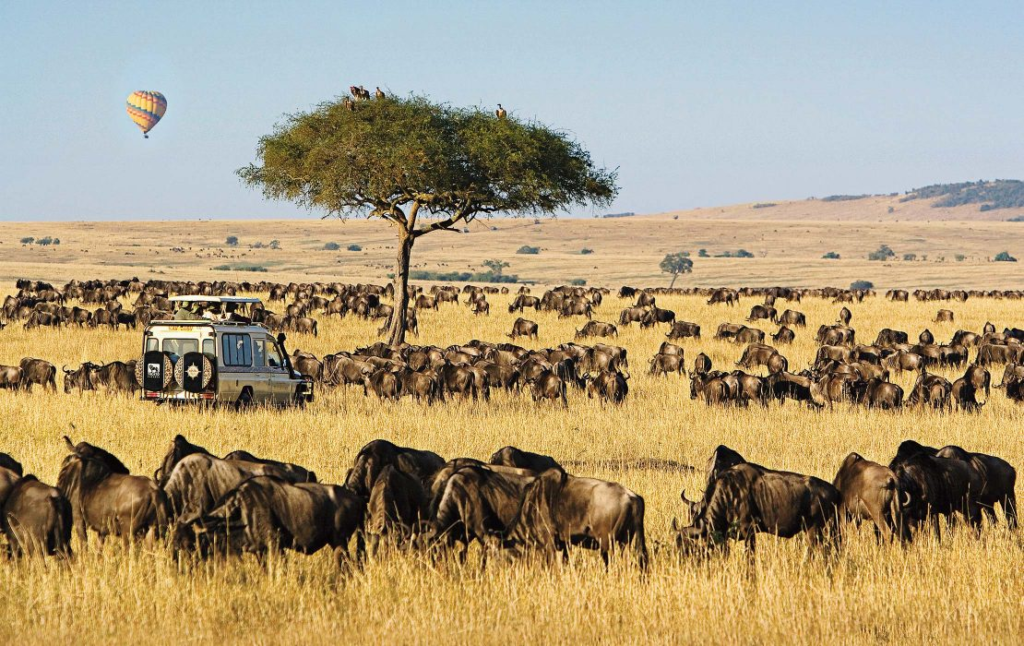
Southwest Kenya’s Masai Mara is renowned for its beautiful, rolling savanna grasslands, the abundance of wildlife, and, between July and October, the massive herds of wildebeest that thunder through the Mara River. The Masai Mara National Reserve is a vast wildlife reserve bordering Tanzania’s Serengeti National Park in southwestern Kenya. The reserve covers an area of 1,510 square kilometres and is named after the Maasai people, who are the region’s original inhabitants.
The Masai Mara is famous for its wildlife and the annual wildebeest migration, which takes place between July and October every year. During this time, millions of wildebeest, zebras, and other herbivores cross the Mara River in search of better grazing land, creating a spectacular display of nature that draws visitors worldwide.
Apart from the migration, the Masai Mara is home to over 95 species of mammals, including the big five (lions, elephants, leopards, rhinos, and buffalo), cheetahs, hyenas, giraffes, and many more. The reserve is also a birdwatcher’s paradise, with over 570 species of birds recorded.
The Narok County Government manages the Masai Mara, and there are several lodges, tented camps, and campsites within the reserve where visitors can stay. However, to avoid the crowds and enjoy a more exclusive safari experience, staying in one of the private conservancies adjacent to the reserve is advisable. These conservancies are run by local Maasai communities and offer visitors a chance to experience the Maasai culture and way of life.
In addition to wildlife viewing, visitors to the Masai Mara can also participate in hot air balloon safaris, guided walks, and cultural tours to the local Maasai villages. The reserve is easily accessible by road or air, with daily flights from Nairobi’s Wilson Airport to several airstrips within the reserve.
Conservation efforts are ongoing to protect the Masai Mara’s wildlife and ecosystem. The Maasai Mara-Serengeti ecosystem is a crucial area for wildlife conservation, and steps are underway to create a transboundary conservation area that will benefit both Kenya and Tanzania.
The Masai Mara National Reserve is a must-visit destination for anyone seeking an unforgettable African safari experience. Its diverse wildlife, stunning landscapes, and rich Maasai culture make it a unique and special place that should be on every traveller’s bucket list.
There are several big cats, including lions, cheetahs, and leopards. Wildlife is tame and simple to locate. Avoiding the crowds is the key to having a pleasant time in the Mara; this means hiring a great guide or spending a little extra to stay in one of the private, community-run conservancies near the national park’s boundaries.
Best time to visit: August.
Entrance fees:
Adults: $80 USD
They offer reduced rates for children and adults that stay at a safari camp within the national reserve boundaries, paying $70 USD.
7. Ngorongoro Crater Conservation Area, Tanzania
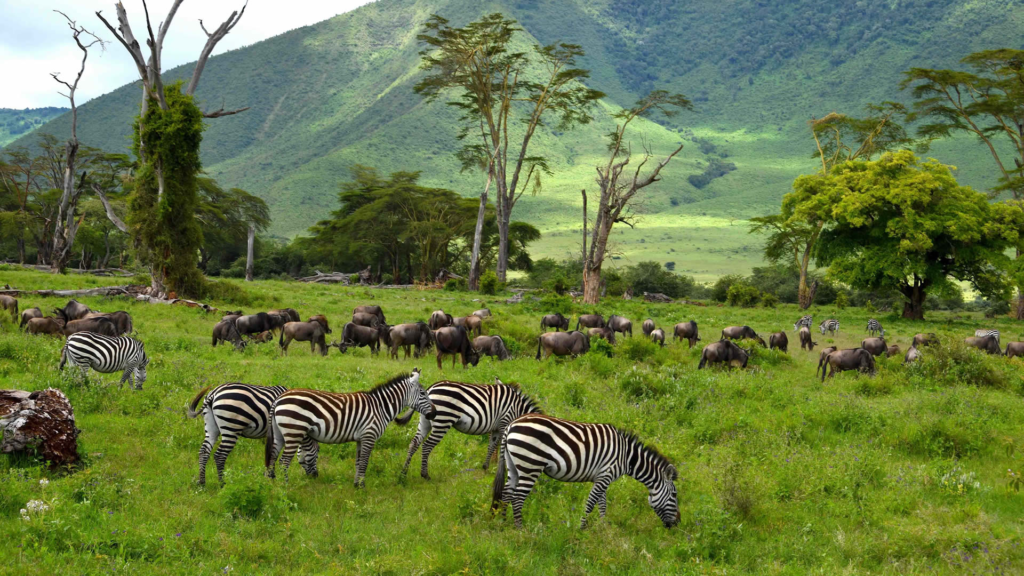
It is named after the nearby Ngorongoro Crater, a vast volcanic crater. The Ngorongoro Crater’s draw to various tourists and travellers is among its outstanding features. There are some breathtaking sights if you enjoy walking. The astounding variety and abundance of birds will enthral bird lovers, and for any artist or photographer looking for inspiration from mother nature, here is the place to go.
Best time to visit: January, February, March, April, May, October and December.
Entrance fees:
Citizens of East Africa:
- $4 USD for adults (above 16 years)
- $2 USD for children between the ages of 5 and 16.
Non-citizens:
- $70.8 USD for adults
- $23.6 USD for children.
8. Queen Elizabeth National Park, Uganda

In southwest Uganda, Queen Elizabeth National Park is made up of savanna, forests and lakes, and it holds a diverse range of wildlife, from elephants to chimpanzees. It’s best known for its lions that have an unusual penchant for climbing trees, but it’s also a great place for boat trips and birding. Its proximity to Bwindi Impenetrable Forest makes it an excellent safari partner for mountain gorilla trekking.
Best time to visit: January, February, June, July, August, and September.
Entrance Fee:
- $40 USD, for Foreigners
- $30 USD, for foreign residents of Uganda
- $5.4 USD, for the east African community citizens.
9. Mala Mala Game Reserve

Mala Mala Game Reserve, one of the top safaris in Africa, is a great spot to watch lions in their natural environment. The largest wildlife reserve in South Africa, Kruger National Park, is bordered by Mala Mala.
The big five, cheetahs, giraffes, and wild dogs, live in this exclusive private game reserve. This is the best place to watch various animals during the dry season, especially around May.
Best time to visit: May, June, July, August and September.
Entrance Fee:
- $18 USD per vehicle plus
- $8.20 USD per person in cash.
10. South Luangwa National Park
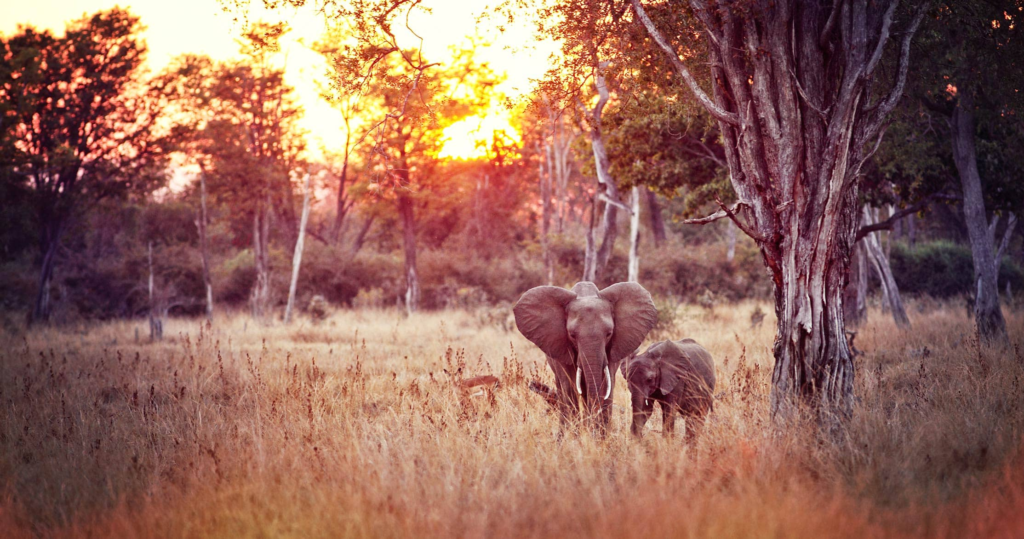
South Luangwa National Park is one of the best places to see wildlife in Zambia, including indigenous species like the Thornicroft’s giraffe and Crawshay’s zebra.
Elephants, lions, and leopards can also be found nearby. The park has several lovely lodges, tented camps, and other lodging options, although they can get crowded in the summer.
Make sure to prepare and make reservations about visiting this park. This park is well-known for its expertly guided walking safaris.
Best time to visit: July, August, September and October.
Entrance Fee:
- Zambian citizens: 41.700 ZMW.
- Foreign residents/SADC Nationals: $20 USD
- Foreign visitors: $25 USD
- Self-drivers: $30 USD
11. Linyanti Concession (Botswana)
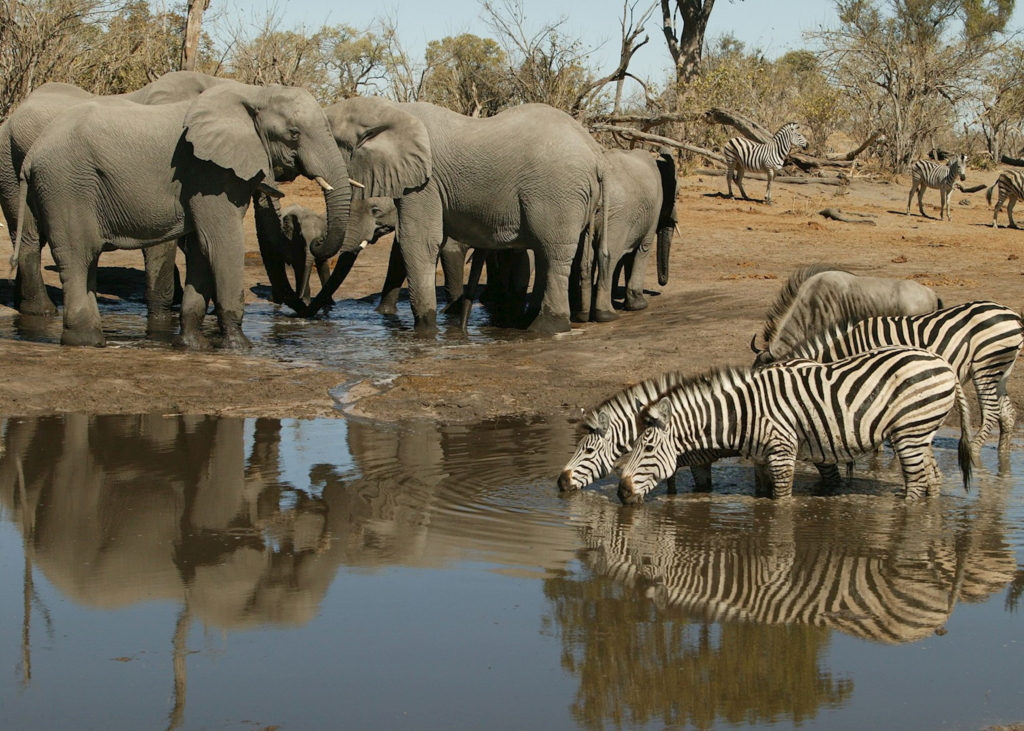
Linyanti is a good choice if you want to experience the true African experience. The private concession of African Bush Camp, situated between the Okavango Delta and the Greater Chobe National Park in the area known as Linyanti, is a unique location in the world.
The Linyanti Channel, acting as an outlet for the water that does not escape into the sands of the Kalahari in the renowned Okavango Delta, plays a role in an ecosystem interconnected by the location.
Best time to visit: May, June, July, August, September, and October.
12. Chobe National Park & Moremi Game Reserve Botswana

Botswana has some of the best wildlife viewings from the water despite being a dry land. In the dry season, wildlife swarms Chobe National Park’s riverfront in the extreme north, when boat tours pass many elephants and buffaloes. Sable are among the numerous herbivores, and lions and hyenas prowl the loop roads. A day trip will get you to Victoria Falls.
The Moremi Reserve, located farther south, safeguards the Okavango Delta’s eastern reaches, where seasonal streams entice abundant animals from the nearby mopane woodland. There are several predators, including wild dogs. The abundant large game and bird life can be seen on boat rides across the lagoons or mokoro (dugout canoe) excursions through the congested canals.
Best time to visit: May, June, July, August, September, and October.
Entrance fee:
- $11 USD for Non-citizen adults aged eighteen and over
- $3 USD for Adult residents of Botswana
- $1 USD for adult citizens of Botswana
13. Katavi National Park, Tanzania

It is one of the best national parks in Africa, and Its landscape consists of two large grassy plains and mixed woods where the herds assemble. The Katuma and Kapapa Rivers, filled with hippos during the dry season, are the sole permanent water sources. There are lots of elephants and lions following the many buffalo.
This park is for safari enthusiasts who prefer to have the bush to themselves. The few compact permanent sites in this isolated region of western Tanzania provide an upscale and in-depth wilderness experience. Because of the distances, game drives can last all day. Walking is excellent, and overnight camping trips with all the fixings are possible.
Best time to visit: June, July, August, September, October, and November.
Entrance fee:
$20 USD per adult.


